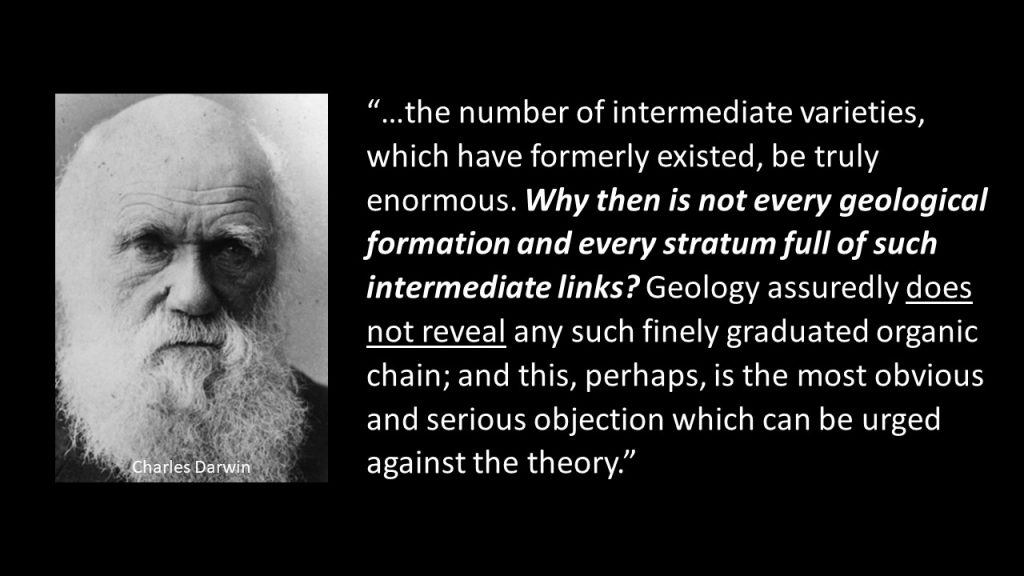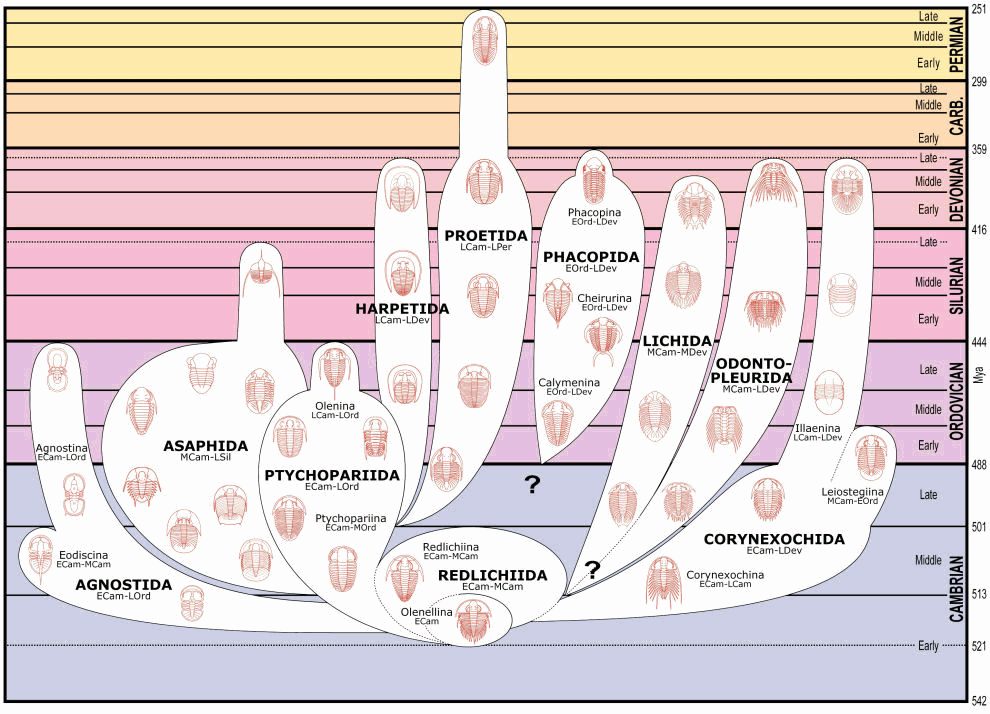
Darwin himself acknowledged, that if every living thing had emerged by presumably millions and millions of small gradual variations over eons of time, then the earth must had been swarming with life. Life comprised of nearly unimaginable variation as one life form slowly emerged from a precursor to a new distinct form. Seeing simple organisms move from kingdom- to phylum- to class- to order- to family- to genus- to species. But this was not the evidence of the fossil record in the 19th century (nor is it today).


The abrupt arrival of living organisms immediately after the Precambrian layer in the Cambrian layer (which we today call the event The Cambrian Explosion) revealed enormously complex organisms such as the horseshoe crab with an incredible 10 complex eyes, suddenly emerging without any precursors in any fossils. These, and many other complex organisms seemed to have emerged from thin air. This was in no way helpful toward defending the new theory as it directly seemed to disprove it.


Even historical scientists of the 19th century, before an understanding of genetics, were well aware that any large-scale variations observed in living organisms caused harm and never had been observed to make any living organism better; such occurrences were proposed by the theory to have been occurring all the time.


The fossil layers reveal mass extinctions—not mass “transmutations”. One geologic period has six periods of time together called the Paleozoic Era, suddenly go extinct in a period called the Permian extinction. Later, massive numbers of completely new never before seen organisms (including dinosaurs and turtles) emerge just like others had during the Cambrian Explosion. Adam Sedgwick, also a critic of Darwin’s theory, pointed out that this pattern of arrival of new life forms (without any precursor forms in the fossil record) followed by extinctions (evidenced by the fossil record) were not the exception but the rule.


Here the trilobite emerges and makes some body changes but remains a trilobite.
Fossil evidence uncovered a pattern radically different then the theory proposed. Instead of simple organisms followed by more and more complex organisms, fossils revealed first major and sudden emergence of whole organisms followed by small-scale diversification. As an example, the trilobite emerged suddenly in the Cambrian layer with enormous complexity. Later, trilobite fossils indicate minor modifications on the body type but no new form—trilobites remained to be trilobites. Unfortunately for Darwin, it seemed the very fossil evidence he needed to prove his theory was best used to disprove the new theory.
“…(trilobites) can have scoops or shovels, (or) be fantastically spiny or beautifully streamlined…but they maintain that common body plan.” Three vertical lobes (“trilobes”) which give the animal its class name.
Dr. Nigel Hughes, Trilobite Specialist, University of California 1

Darwin’s explanation: the geologic data of the 20th century was still incomplete– he relied on future generation to fill in the gaps and vindicate his theory
Darwin proposed a solution for the dilemma. He called the fossil record as discovered in the 20th century as imperfect. “The explanation lies, as I believe, in the extreme imperfection of the geologic record.” He went on to state that it would be up to future generations to make the discoveries that would ultimately validate his theory as true.

The 21st century proved Darwin right that many more fossils were discovered. But would they suffice to ultimately validate his theory? In Greenland in the 1930’s where tetra-pod’s, four-legged life forms such as frogs and lizards were uncovered.

In the 1990’s, many bird fossils with feather imprints were found in China.

In Pakistan whale fossils were unearthed.

But is was the Burgess Shale fossil discovery of 1909 that was most significant. Here completely new and never before documents animals were discovered at the Cambrian layer. Again, just as with all the enormously complex animals of the Cambrian explosion, had no precursor forms in the fossils below.

These fossil provided new and larger problems for Darwin’s theory: now there were more suddenly emerged life forms without precursors to explain…
With all the new fossil evidence, Darwin’s theory was no better off. Instead, with the Burgess Shale discovery there were now more Cambrian whole animals to explain.
The Burgess Shale uncovered novel massively complex organisms never found anywhere else on earth. Unfortunately for the theory, just like the many organisms found in other Cambrian layers, these too offered no precursor forms in earlier layers. The Burgess Shale had made the fossils more problematic for Darwin’s theory and not less. Now there were new incredible life forms that had to be explained.
More related blogs: FOSSIL EVIDENCE DEFIES EVOLUTIONARY EXPECTATIONS, JELLY FISH FOSSILS EVIDENCE OF RAPID PROCESSES, CAMBRIAN EXPLOSION EXPLAINED BY DEEP DIVERGENCE IN PRECAMBRIAN LAYERS?
1 https://www.nytimes.com/2014/03/04/science/when-trilobites-ruled-the-world.html


